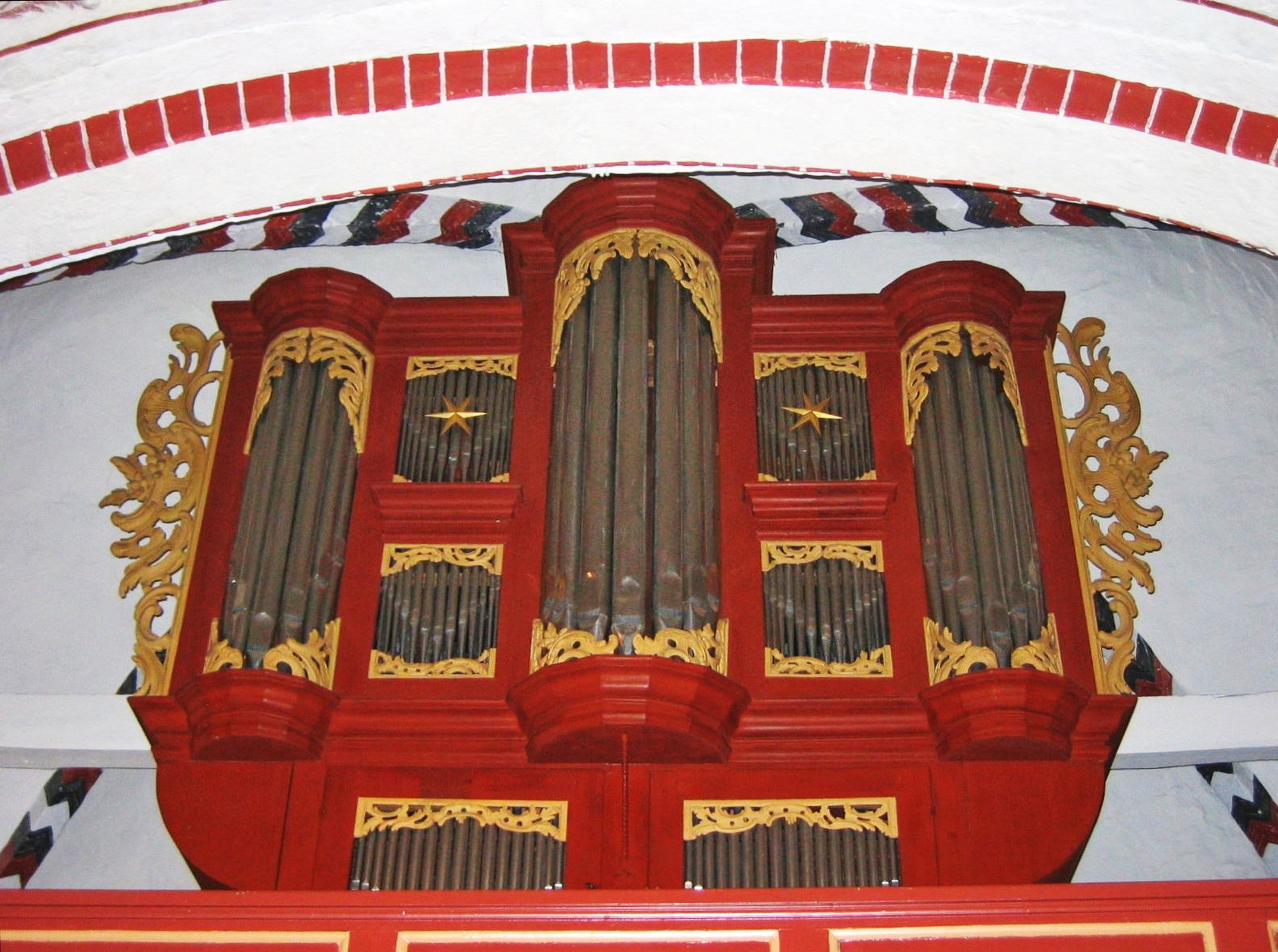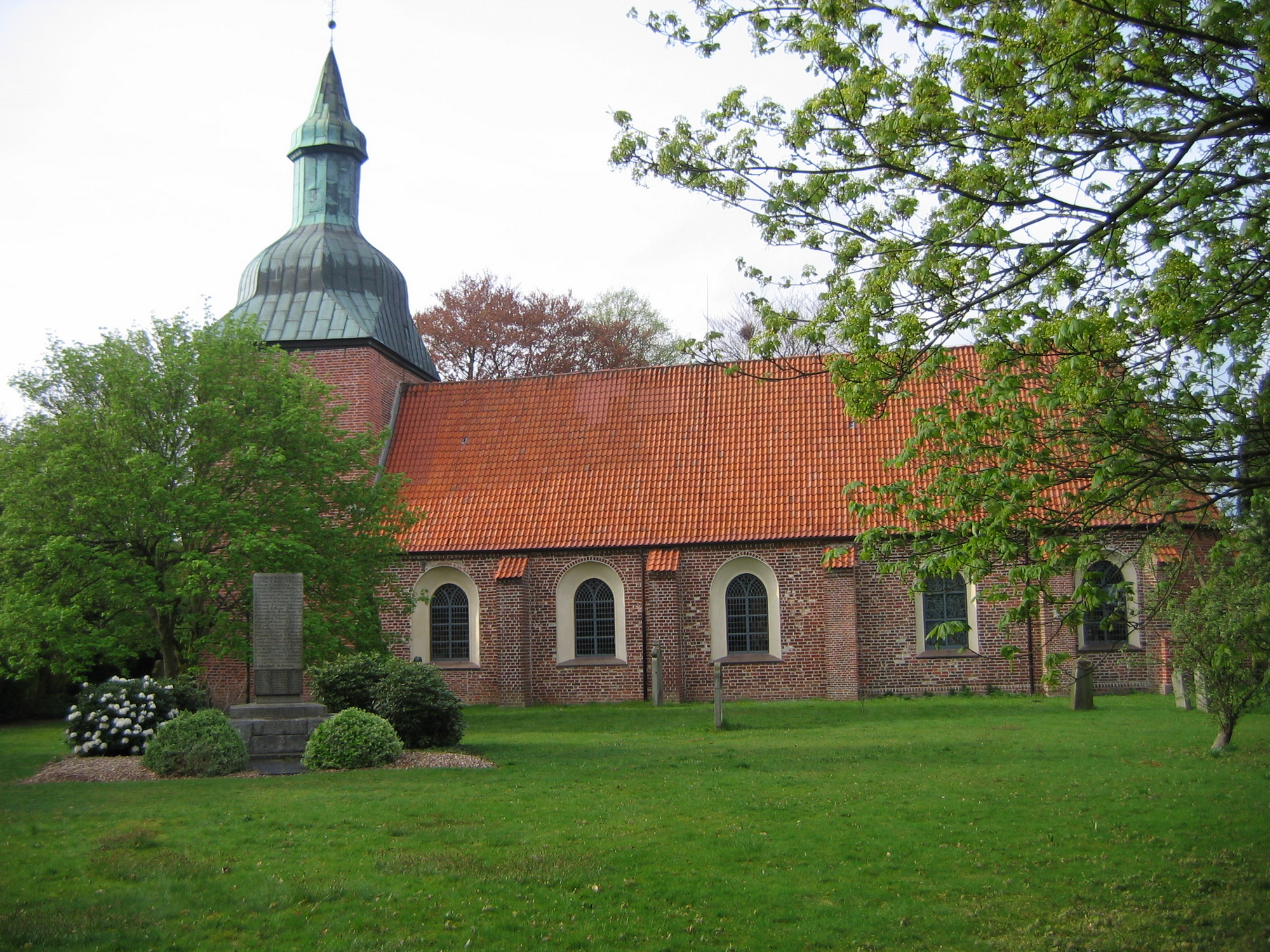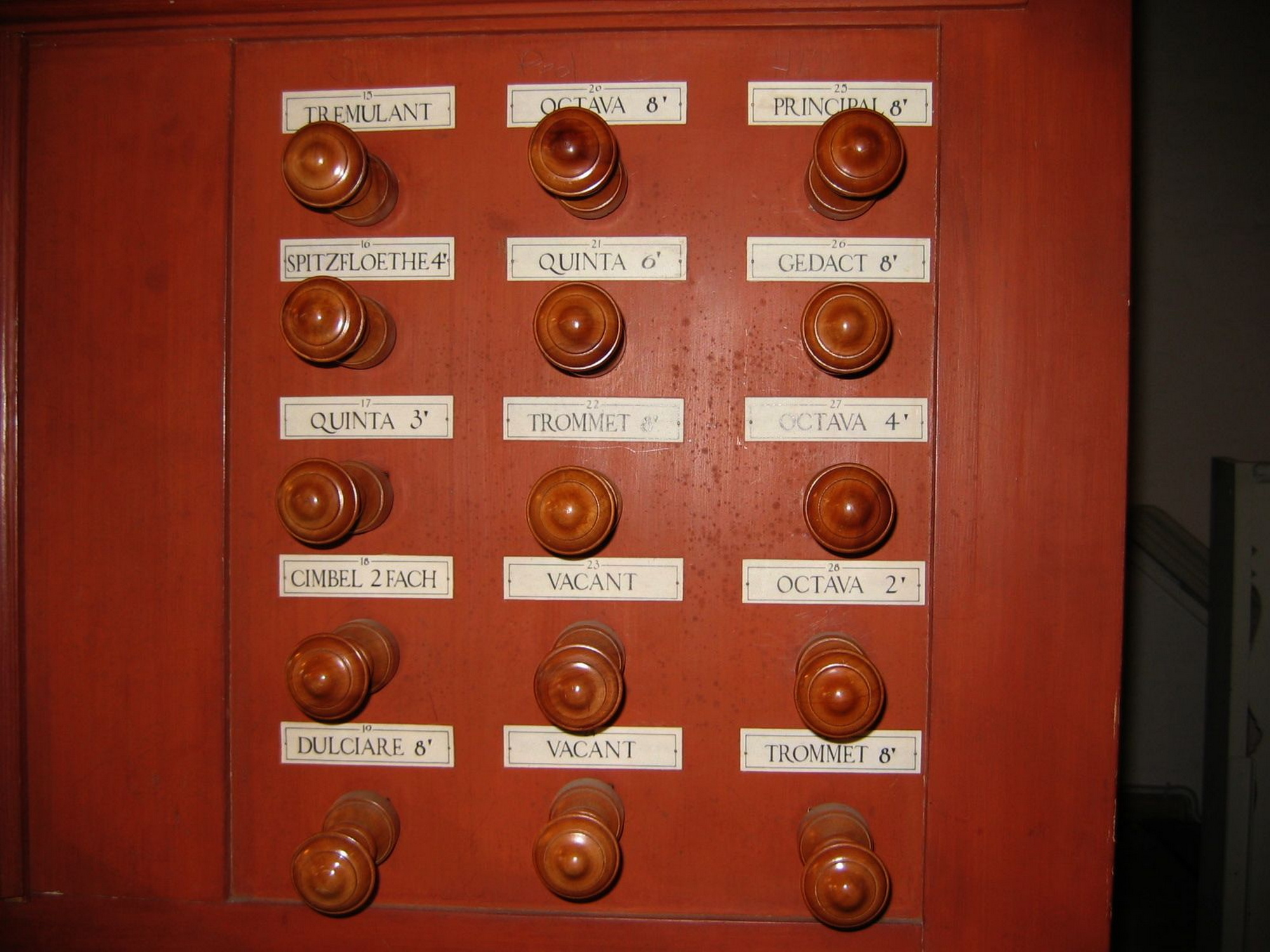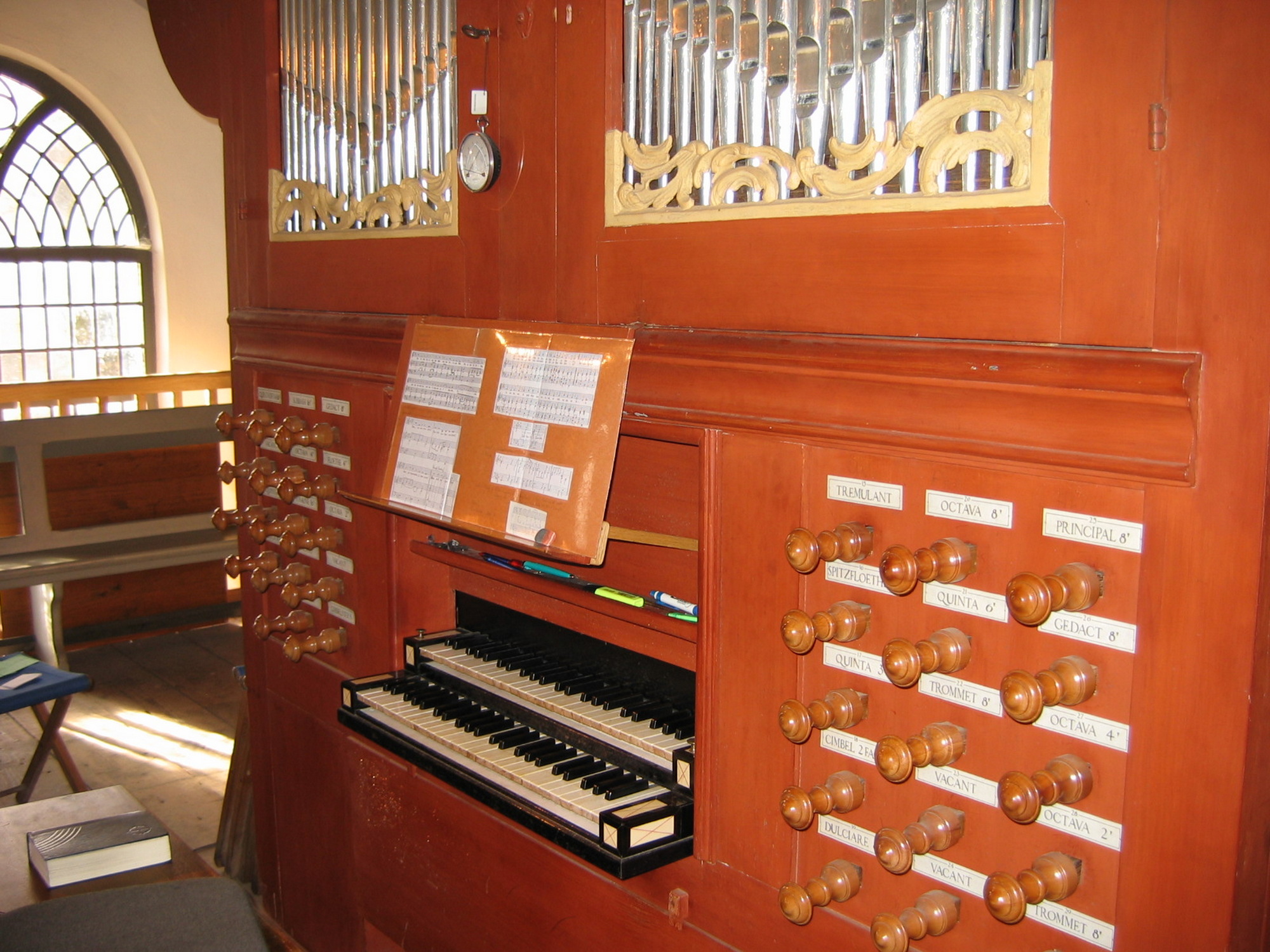Loxstedt, St. Marien
| Builder | J. M. Schreiber |
|---|---|
| Year | ca. 1771 |
| Period/Style | Baroque |
| Stops | 21 |
| Keyboards | 2+P |
| Keyaction | tracker/mechanical |
| Tuning | Equal |
The organ in the St. Marien Church in Loxstedt is the final work of the Glückstadt organ builder Matthias Schreiber, who passed away during its construction in 1771 and was buried in Loxstedt. This organ retains the largest amount of original pipes among Schreiber's works. The instrument was completed approximately 20 years after its initial construction by Johann Georg Wilhelm Wilhelmy and Johann Wolfgang Witzmann in 1789. The organ's façade, with its Rococo-style decorations, reflects the artistic trends of the period.
The organ remained largely intact over the centuries, but by 1970, it had deteriorated to the point where it could no longer accompany congregational singing. The church community chose to leave the organ untouched on the gallery and temporarily used a borrowed positive organ. In 1983, after significant restoration efforts by the Alfred Führer company, the organ was restored to its former glory. The organ's sound, described as "a bit rough," is characteristic of late 18th-century village church organs. However, due to its tuning—nearly a full tone above the standard pitch of 440 Hz—the organ remains a solo instrument, making it difficult to integrate with other musical ensembles.
The organ remained largely intact over the centuries, but by 1970, it had deteriorated to the point where it could no longer accompany congregational singing. The church community chose to leave the organ untouched on the gallery and temporarily used a borrowed positive organ. In 1983, after significant restoration efforts by the Alfred Führer company, the organ was restored to its former glory. The organ's sound, described as "a bit rough," is characteristic of late 18th-century village church organs. However, due to its tuning—nearly a full tone above the standard pitch of 440 Hz—the organ remains a solo instrument, making it difficult to integrate with other musical ensembles.
| Haupt Clavier (I) | Zweyte Clavier (II) | Pedal |
|---|---|---|
| Quintadena 16' | Gedact 8' | Subbash 16' |
| Principal 8' | Spitzfloethe 4' | Octava 8' |
| Gedact 8' | Floethe 4' | Quinta 6' |
| Octava 4' | Quinta 3' | Octava 4' |
| Quinta 3' | Octava 2' | Posaune 16' |
| Octava 2' | Cimbel II | Trommet 8' |
| Mixtur | Dulciane 8' | |
| Trommet 8' |
No Video/Audio samples available.
https://nomine.net/orgel/loxstedt-st-marien/
 Pipe Organ Map
Pipe Organ Map



